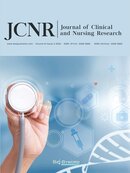Abstract
Objective: To investigate the application value of thrombelastogram (TEG) in the detection of platelet inhibition rate for antiplatelet therapy for acute non-cardiogenic stroke. Methods: A total of 100 patients with ischemic non-cardiogenic stroke were selected for this study from September 2020 to October 2021. Patients were randomly divided into experimental group and control group, with 50 cases for each group. Before and after 1 week of antiplatelet drug treatment, the platelet inhibition rate in the experimental group was measured with arachidonic acid (AA) and adenosine diphosphate (ADP) by TEG; no platelet inhibition rates detection was conducted for the control group. The dose and type of drugs were adjusted for the experimental group according to the platelet functions and medication based on the clinical experience conducted for the control group. The neurological deficits of the discharged patients were scored with NIHSS score, mRS score, stroke recurrence, hemorrhage, and other events were followed up at the 3rd month of discharge. Results: In the experimental group, the inhibition rates of AA and ADP were significantly higher than those before treatment (both P < 0.05). After treatment, the inhibition rates of AA and ADP in dual antiplatelet patients were higher than those of monoclonal antiplatelets (both P < 0.05). The NIHSS score at discharge and the mRS score at the 3rd-month-follow-up in the experimental group were lower than those in the control group (both P < 0.05). The incidences of stroke recurrence and hemorrhage events in the experimental group were lower than those in the control group (P < 0.05). Conclusion: The application of a thrombelastogram in the detection of platelet inhibition rate to guide antiplatelet therapy in patients with acute non-cardiogenic stroke reduces the recurrences of cerebral infarction and the risk of hemorrhage and improves patients’ clinical prognosis.
References
GBD 2019 Stroke Collaborators, 2021, Global, Regional, and National Burden of Stroke and its Risk Factors, 1990–2019: A Systematic Analysis for the Global Burden of Disease Study 2019. The Lancet Neurology, 20(10): 795–820. https://www.doi.org/10.1016/S1474-4422(21)00252-0
Wang Y, Xu J, Zhao X, et al., 2013, Association of Hypertension with Stroke Recurrence Depends on Ischemic Stroke Subtype. Stroke, 2013, 44(5): 1232–1237. https://www.doi.org/10.1161/STROKEAHA.111.000302
Cao J, Liu L, Fan L?et al., 2012, The Prevalence, Risk Factors, And Prognosis of Aspirin Resistance in Elderly Male Patients with Cardiovascular Disease. The Aging Male: The Official Journal of the International Society for the Study of the Aging Male, 15(3): 140–147. https://www.doi.org/10.3109/13685538.2012.666584
Gan Y, Yang T, Liu J, et al., 2019, Research Progress on Epidemic Trend and Influencing Factors of Stroke at Home and Abroad. Chinese Journal of Preventive Medicine, 20(02): 139–144. https://www.doi.org/10.16506/j.1009-6639.2019.02.013
Shulga O, Bornstein N, 2011, Antiplatelets in Secondary Stroke Prevention. Frontiers in Neurology, 2: 36?https://www.doi.org/10.3389/fneur.2011.00036
Greer DM, 2010, Aspirin and Antiplatelet Agent Resistance: Implications for Prevention of Secondary Stroke. CNS Drugs, 24(12): 1027–1040. https://www.doi.org/10.2165/11539160-0000000000-00000
Depta JP, Fowler J, Novak E, et al., 2012, Clinical Outcomes Using a Platelet Function-Guided Approach for Secondary Prevention in Patients with Ischemic Stroke or Transient Ischemic Attack. Stroke, 43(9): 2376–2381. https://www.doi.org/10.1161/STROKEAHA.112.655084
Jia D–M, Chen Z-B, Zhang M-J, et al., 2013, CYP2C19 Polymorphisms and Antiplatelet Effects of Clopidogrel in Acute Ischemic Stroke in China. Stroke, 44(6): 1717–1719. https://www.doi.org/10.1161/STROKEAHA.113.000823
Qiu S, Miao F, Wu T, et al., 2014, Meta-Analysis of Antiplatelet Effect of Aspirin and Clopidogrel. Shandong Medicine, 54(22): 40–43.
Shaun Rowe A, Greene CL, Snider CC, et al., Thromboelastographic Changes in Patients Experiencing an Acute Ischemic Stroke and Receiving Alteplase. Journal of Stroke and Cerebrovascular Diseases, 23(6): 1307–1311.
Wang Y, Meng X, Wang A, et al., 2021, Ticagrelor Versus Clopidogrel in CYP2C19 Loss-of-Function Carriers with Stroke or TIA. The New England Journal of Medicine, 385(27): 2520–2530 https://www.doi.org/10.1111/2530.10.1056/NEJMoa2111749
